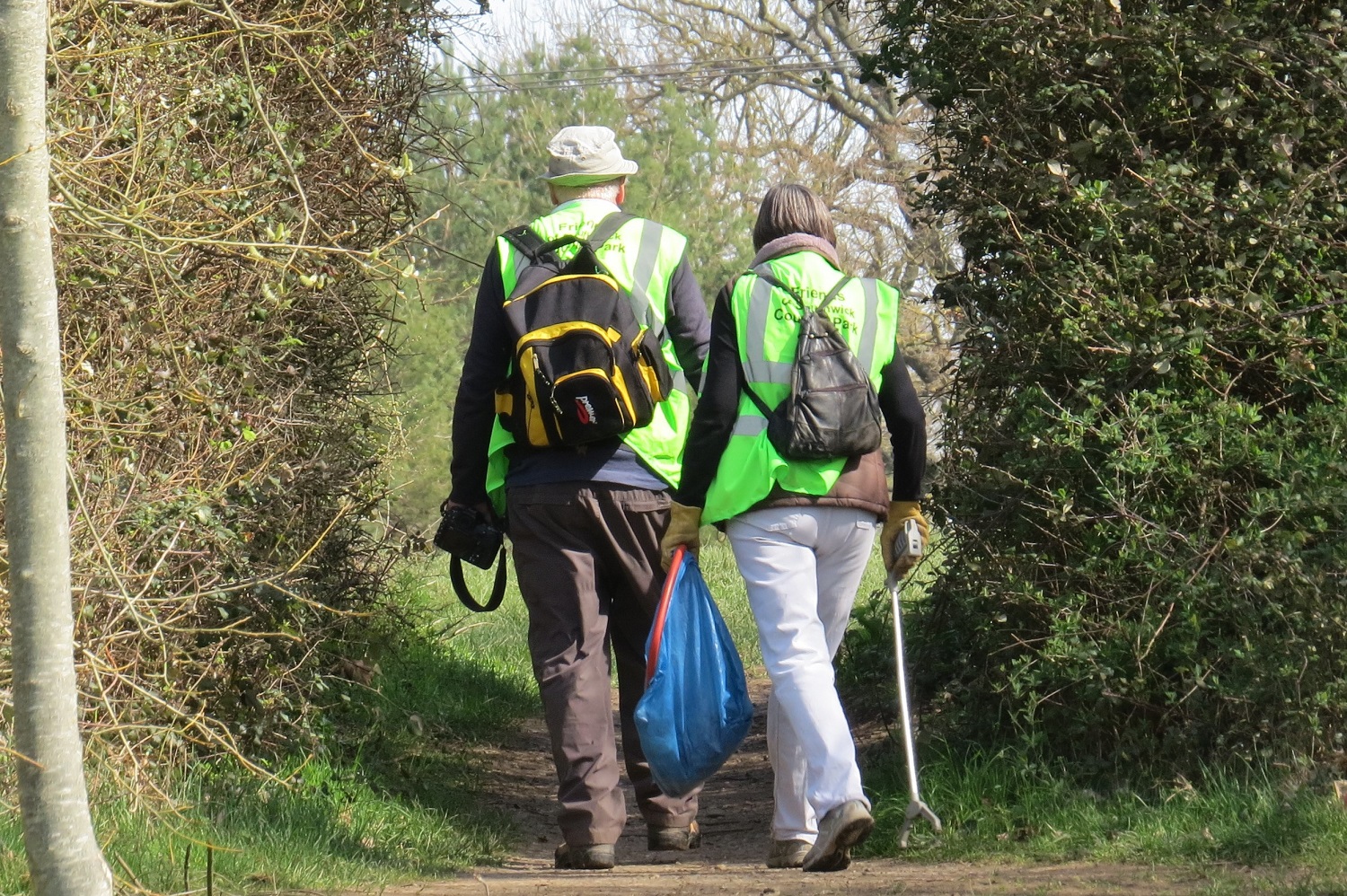A male scorpion fly photographed by Ian Bushell yesterday, in the reserve’s main car park.
There are three species of scorpion fly native to Britain, very difficult to tell apart without the use of a microscope. Both sexes of all three species have yellow and black bodies, long spotted wings, prominent reddish compound eyes and disproportionately large mouthparts. The males also have scorpion-like claspers at the end of their abdomens, used in courtship display and mating.
They are nowhere near as dangerous as they look: scorpion flies cannot sting or bite you.

[1] 
[2]
[1] A female scorpion fly; [2] a male scorpion fly showing the scorpion-like claspers at the end of the abdomen.
They live among the stinging nettles and brambles of hedgerows and woodland edges, scavenging on dead organisms, sometimes stealing dead insects from spiders’ webs.
Mating, which often takes place at night, can be risky for the male; despite his over-sized genitalia and fearsome apppearance, he might easily be killed by the female. He brings her a gift of a dead insect or a drop of saliva to charm and distract her.
A scorpion fly’s life cycle is rarely longer that a single year. The mated female lays her eggs in the soil in the spring and the larvae, omniverous scavengers like their parents, live and pupate in the top layers of the soil. They will hatch into adults in the autumn.




